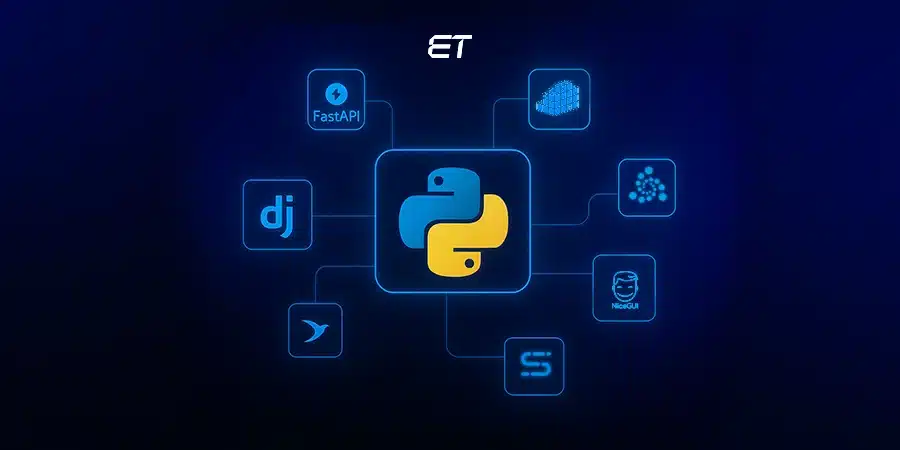
How to Conduct Technical Due Diligence for Offshore Software Companies
You’re on a Zoom call with a potential offshore software partner. The deck looks flawless; sleek UI mockups, confident faces, and promises of end-to-end agility. They talk about innovation; you nod. Everything sounds perfect… until six months later, when the product starts to crumble under load, no one knows who’s responsible.
That’s what happens when you skip technical due diligence (TDD).
Simply put, TDD is the step before every big partnership that decides whether your next project becomes a success story or not. In this process, you gauge how a company builds, tests, scales, and secures software.
The good news?
You don’t need to be an IT auditor to get it right. But you do need a structured approach, one that helps you separate presentation from performance. And that’s precisely what this guide will help you do.
What Technical Due Diligence Really Reveals
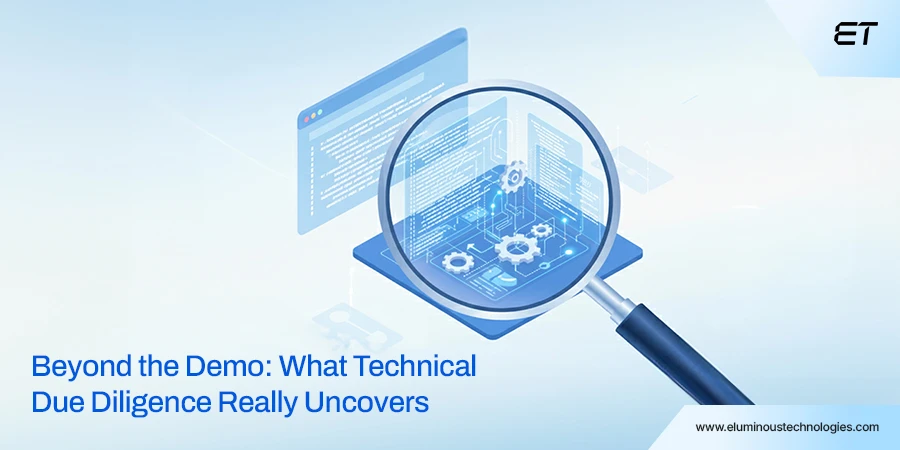
Most companies discuss technical due diligence as if it were a code audit.
But if you’ve ever been on the other side of an offshore partnership, you know it’s far more than that.
Technical due diligence is a structured assessment that helps you understand how solid, scalable, and sustainable a company’s technology truly is. It looks beyond the glossy demos and marketing claims.
This process helps you dig into the architecture, development practices, security posture, infrastructure, and the team’s problem-solving culture.
Think of it as a deep X-ray of your potential partner’s tech backbone. It answers questions like:
- Is their codebase clean, modular, and future-proof?
- How disciplined are their release cycles and testing processes?
- Do they follow security best practices, or are you inheriting hidden risks?
- Can their infrastructure handle real-world scale, not just demo-day traffic?
- How does their engineering team communicate and document what they build?
When done right, technical due diligence reveals how the company thinks, prioritizes, and operates.
That’s the real insight.
It helps you see whether their technical mindset aligns with your long-term business vision. In short, it’s your way of verifying whether the promise actually holds up under scrutiny.
Why Technical Due Diligence Matters in Offshore Software Partnerships
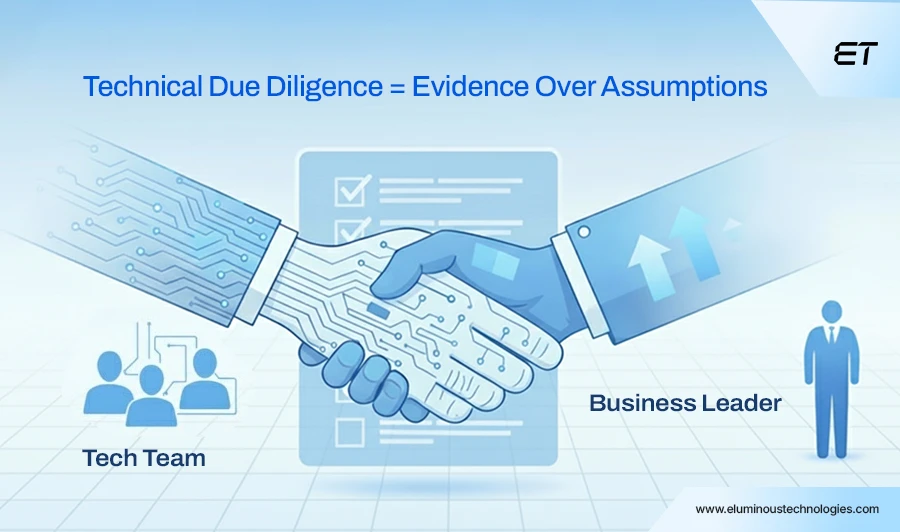
Offshore software partnerships can feel like a gamble.
You’re dealing with time zones, cultural differences, and limited visibility into how work actually gets done. Everyone claims to have senior developers and proven agile processes. But you won’t really know what that means until you commit.
That’s exactly where TDD proves vital.
You’re not just believing what a vendor says. Instead, you’re validating it with evidence. And that’s crucial because the cost of a bad tech decision doesn’t show up immediately. It sneaks in later through unstable products, missed deadlines, integration nightmares, and mounting technical debt.
When you perform proper technical due diligence, here’s what you gain:
- Transparency: You see how the team actually builds software (their architecture choices, deployment patterns, and coding discipline).
- Risk clarity: You can spot red flags early (outdated dependencies, missing documentation, or weak security layers).
- Alignment: You understand whether the vendor’s culture fits your company’s standards, compliance requirements, and goals.
- Confidence in scalability: You know whether their tech stack can grow with your business.
At its core, technical due diligence signals that you take collaboration seriously and that you’re investing in success, not speed.
The Complete Technical Due Diligence Checklist for Offshore Software Partners
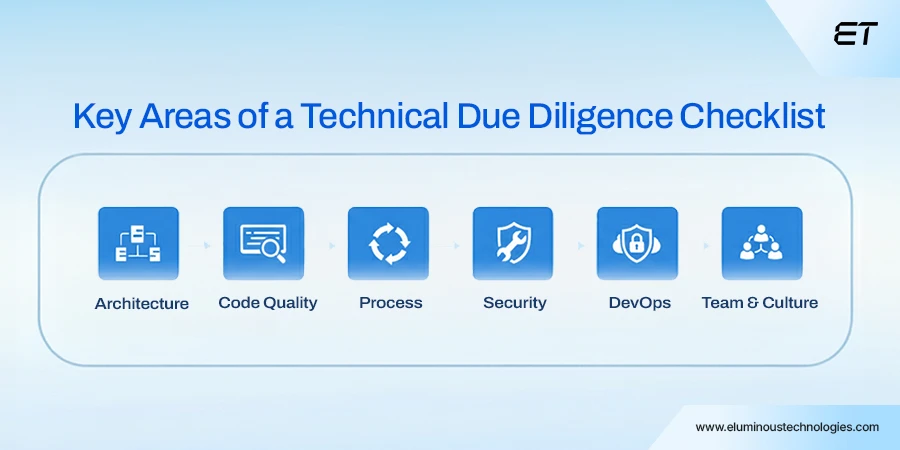
A thorough TDD checklist helps you evaluate an offshore software partner in a structured, evidence-based way. It keeps the process objective; no fluff, no assumptions, just facts about how the vendor builds and maintains technology.
Here’s a breakdown of what to assess and why it matters.
1. Technology Architecture
If there’s one thing that reveals a partner’s engineering maturity, it’s their architecture. You can tell a lot about a team by how they structure software.
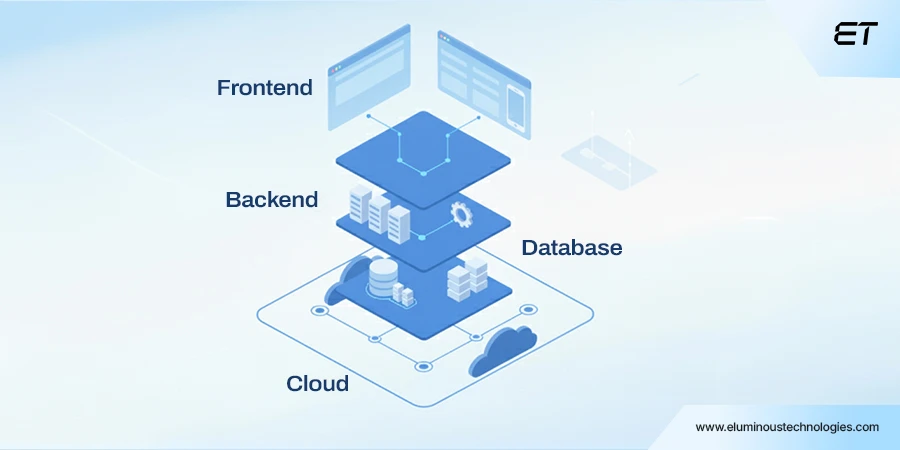
A good technical due diligence exercise begins with understanding how the offshore vendor approaches architecture decisions.
Don’t just ask, “What tech stack do you use?” Instead, ask why they chose it, and how it supports scalability, resilience, and maintainability.
Here’s what you should be evaluating:
- System design and scalability: Can the architecture handle future growth? A modular or microservices-based architecture gives you more flexibility than a tightly coupled monolith.
- Integration readiness: Check if the system plays well with third-party tools, APIs, and your internal systems.
- Cloud and infrastructure choices: Are they focusing on auto-scaling, monitoring, and redundancy, or simply hosting code?
- Documentation and diagrams: A mature team will always have updated architecture diagrams and documentation.
You’ll find that teams with solid architecture discipline are also better at project planning, DevOps, and testing.
Red flag: If the team struggles to explain how data flows through their system, you’re probably dealing with an unstable foundation.
2. Code Quality and Maintainability
Reviewing code quality and maintainability is the most revealing part of TDD. It’s where you see the engineering team’s proper habits.

Good code is about clarity, consistency, and intent.
Here’s how you can evaluate this facet during technical due diligence:
- Code structure and readability: Ask for access to a small, representative code sample. Is it modular and clean, or cluttered with quick fixes and duplicated logic?
- Adherence to best practices: Are they following standard principles like SOLID, DRY, and proper exception handling? Do they maintain consistent code formatting, linting, and commenting?
- Version control hygiene: Peek at their Git history. Frequent commits with clear messages mean accountability and collaboration.
- Documentation: Each module should come with minimal but clear documentation.
When you’re evaluating an offshore software partner, you won’t always have time for a complete code audit. Even a brief walkthrough with their tech lead can reveal whether they approach code as a craft or a chore.
Red flag: Inconsistent naming, missing comments, or temporary fixes. These are signs of a team caught up in its own mistakes.
3. Development Process and Documentation
Even the best engineers fail without process discipline. Code is just one layer of technical maturity. What really drives success is how that code moves from idea to release.
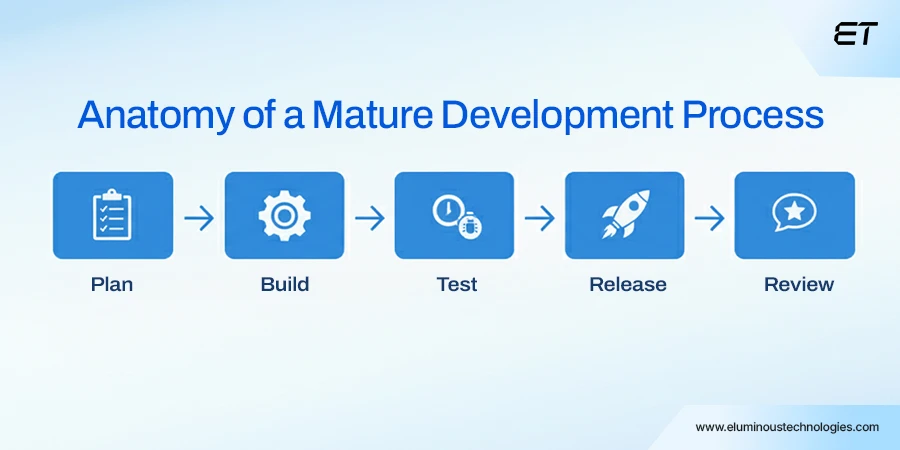
When you’re evaluating a software partner, don’t just look for ‘Agile’ on their website. Everyone claims to be Agile these days. The real question is whether their processes create clarity, accountability, and predictability.
Here’s how to assess that at a glance:
| Area | What to Look For | Why It Matters |
| Version Control | Use of Git with branching strategy and regular commits. | Reflects team collaboration and rollback readiness. |
| Project Management | Defined sprint cycles, backlog grooming, and stakeholder demos. | Shows if delivery is structured and transparent. |
| Documentation | Updated technical specs, API docs, architecture diagrams, and process wikis. | Indicates whether the team builds knowledge or hoards it. |
| Release Management | Tagged releases, changelogs, and automated deployments. | Reduces deployment chaos and helps trace issues quickly. |
| Communication Rhythm | Regular stand-ups, sprint retros, and async updates (Slack, Jira, Notion, etc.). | Ensures visibility across time zones. |
A solid process reflects engineering maturity. The goal is to build a system that consistently delivers quality without needing rectifications at every release.
Red flag: If you ask for documentation and they send you screenshots of Slack conversations or outdated PDFs.
4. Security and Compliance
Security lapses are business risks that can cost you clients, credibility, and compliance certifications overnight.
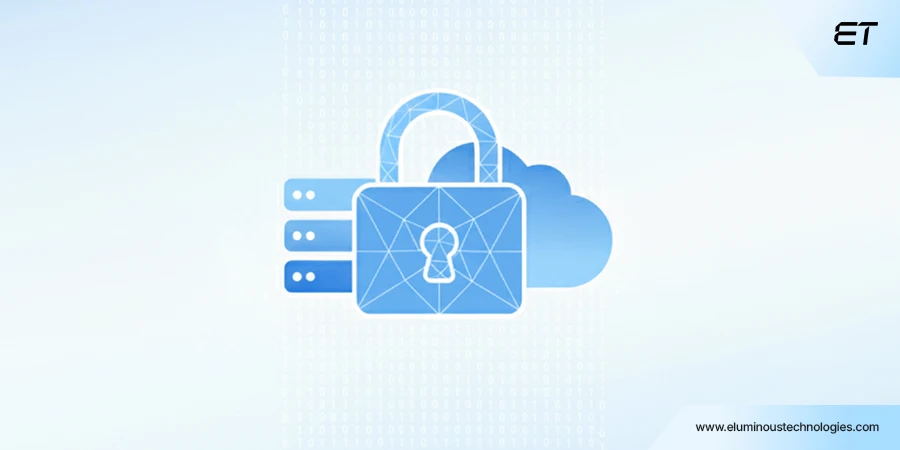
When you’re dealing with offshore teams, that risk multiplies. So, during TDD, treat security and compliance as non-negotiable.
Here’s how to approach it:
Start With the Basics
Ask the vendor about their authentication systems, access control policies, and how they handle passwords, tokens, and encryption. A mature team will confidently explain its protocols; an inexperienced one will throw jargon like AES and SSL without context.
Understand How Data Flows
Request a data flow diagram. You need clarity on where the data resides, who can access it, and how it’s secured at rest and in transit. You’d be surprised how often remote teams rely on shared cloud credentials or outdated servers. That’s the kind of oversight that bites later.
Check Their Compliance Readiness
Depending on your industry, your partner should demonstrate at least basic familiarity with major frameworks:
- GDPR: For any EU user data
- HIPAA: For health-related software
- SOC 2/ISO 27001: For enterprise-grade data protection and audit readiness
Demand documentation. See if they show audit trails, certifications, or policy templates.
Ask About Incident Management
No one is immune to vulnerabilities. The real sign of maturity is how quickly and transparently a team responds when something breaks. A partner that takes security seriously will answer these questions confidently, not defensively.
5. Infrastructure and DevOps Practices
You can tell how seriously a software company takes its infrastructure by the way it handles it.
When you’re assessing infrastructure and DevOps practices during TDD, focus less on the tools they use and more on how intelligently they use them.

Here’s what you should dig into:
- Deployment automation: Mature teams automate deployments through CI/CD pipelines using tools like GitHub Actions, GitLab CI, or Jenkins.
- Monitoring and observability: Proactive monitoring is the difference between a minor hiccup and a major outage.
- Backup and recovery strategy: A proper disaster recovery plan should define RTO (Recovery Time Objective) and RPO (Recovery Point Objective).
- Infrastructure as Code (IaC): Teams using Terraform, Pulumi, or CloudFormation show discipline.
- Environment management: Check if they maintain separate staging, testing, and production environments.
Red flag: A team that talks about DevOps as if it’s just another small part. Real DevOps is a culture.
6. Testing and QA Maturity
During TDD, QA maturity tells you more about a vendor’s mindset than their technology stack ever could.

Here’s how to separate marketing talk from real engineering maturity:
- Mature teams invest in automated testing because they value prevention over patching. Ask what percentage of their test suite is automated.
- Look at their CI/CD pipeline. Can you see test reports, logs, and coverage metrics in real time? Transparency is a sign of confidence.
- You want dedicated QA engineers who collaborate closely with developers from the first sprint.
- What’s their process for logging, classifying, and fixing issues? Tools like Jira, Linear, or ClickUp should show a clear trail.
- Beyond scripts, the best teams also perform scenario-based testing. They explore the software like a user, not a robot. That’s where subtle UX and logic issues usually surface.
Red flag: If QA happens right before launch, that’s not testing.
7. Team Competence and Culture
You can buy great technology, but not great culture.
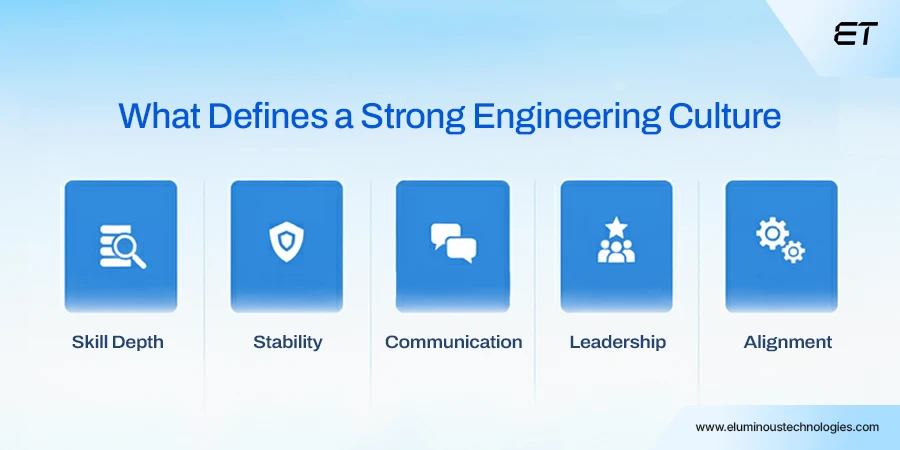
Technical due diligence isn’t just about architecture diagrams and CI/CD pipelines. It’s also about the humans behind them.
So, here’s what you should evaluate:
| Aspect | What to Observe | Why It Matters |
| Technical Competence | Experience across tech stacks, exposure to complex projects, certifications, and problem-solving ability. | Helps gauge whether they can handle enterprise-level challenges. |
| Team Stability | Employee retention, senior-to-junior ratio, and how often key members rotate off projects. | High churn disrupts continuity and kills momentum. |
| Communication Style | Clarity in updates, responsiveness, and proactiveness during feedback cycles. | Offshore success depends on clear, timely, and context-rich communication. |
| Leadership and Mentorship | Are tech leads coaching juniors, conducting code reviews, and setting engineering standards? | Signals whether the team scales sustainably as projects grow. |
| Cultural Alignment | Attitude toward deadlines, accountability, and transparency. | Determines how seamlessly they’ll blend with your internal processes. |
Numbers and resumes only tell part of the story. To get the whole picture, spend time with their engineering leads during the due diligence phase.
Ask how they resolve disagreements, handle technical debt, or react when a sprint derails. You’ll learn more in that 30-minute conversation than from a dozen portfolios.
Red flag: The vendor hides behind their project manager for every technical question. It usually means the real decision-makers aren’t hands-on.
8. Product Management and Delivery Discipline
Great offshore partners translate business goals into predictable outcomes. And that’s where product management comes in.
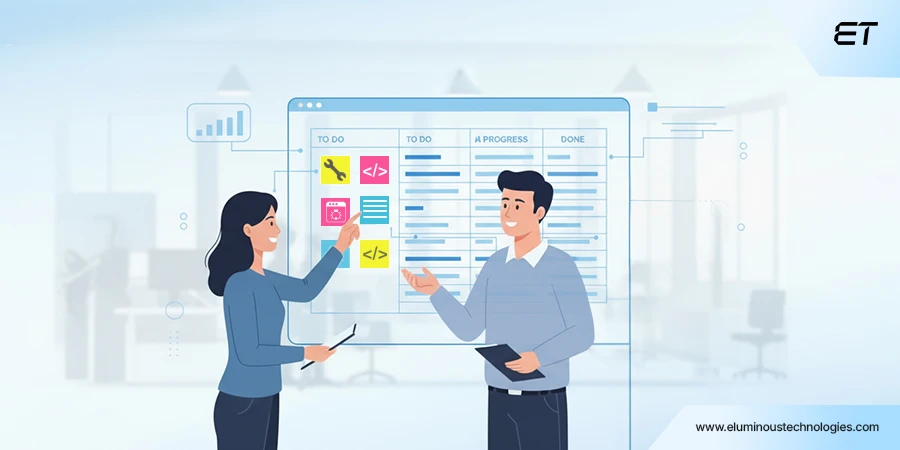
When reviewing this part of TDD, you’re basically checking how well the vendor turns strategy into software. Here’s what to look for:
- Clarity of requirements: The best teams challenge assumptions, ask questions, and validate goals before jumping into development.
- Sprint discipline: Check if they consistently close sprints on time, hold retrospectives, and document what’s shipped.
- Prioritization framework: You want a partner who weighs impact, dependencies, and effort before committing.
- Stakeholder visibility: You shouldn’t have to chase updates; they should arrive like clockwork.
- Change management: Do they have a structured way to assess the impact of scope changes on timelines and budgets, or does every new feature turn into chaos?
- Post-release discipline: Ask about bug triage, release documentation, and support ownership.
Red flag: If the team says “We’re flexible with process,” that often translates to “We don’t have one.” Structure saves you when things go wrong.
9. Post-Delivery Support
How a team handles post-delivery support reveals whether they see you as a one-off project or a long-term partner.

Here’s what to check during technical due diligence:
- Maintenance structure: Is there a dedicated post-launch support team, or do they pull developers away from active projects to fix issues?
- Service Level Agreements (SLAs): Look for clear commitments like response times, resolution timelines, and escalation protocols.
- Update cycles: How frequently do they release patches, improvements, or security updates? A consistent cadence means they’re proactive, not reactive.
- Knowledge transfer: Ensure there’s documentation for deployments, configurations, and dependencies before handoff. Without it, your internal team will be forced to reverse-engineer fixes later.
Red flag: “Don’t worry, we’ll handle it if something comes up.” If you hear this, there’s most likely no real plan.
To Sum Up
Technical due diligence is all about innovative partnership.
When you’re assessing an offshore software development company, test their integrity, process, and mindset. A structured TDD process helps you look beyond polished presentations and see what truly matters.
Once you know where the strengths and risks lie, you can make confident decisions grounded in facts, not assumptions.
Because in software partnerships, it’s not the flashiest team that wins.
It’s the one that builds with discipline, communicates with honesty, and treats your product like their own.
Looking for a reliable offshore partner? Start with technical due diligence.
Frequently Asked Questions
1. What is technical due diligence in software development?
Technical due diligence is the process of assessing a company’s technology, infrastructure, code quality, and team capabilities before entering a partnership or investment.
2. Why is technical due diligence important when outsourcing software development?
It helps you verify whether an offshore vendor has the exemplary architecture, engineering practices, and delivery discipline to support your product vision. Without due diligence, you risk hidden technical debt, weak security, and poor scalability.
3. What should a TDD checklist include?
A strong checklist covers architecture design, code quality, DevOps practices, QA processes, security posture, and team competence. It should also review documentation, infrastructure management, and post-delivery support plans.
4. How long does a technical due diligence process take?
Depending on the project size and complexity, it typically takes 2 – 4 weeks. For smaller engagements, a focused audit may wrap up in under two weeks, while enterprise-level reviews can stretch longer due to deeper assessments.




